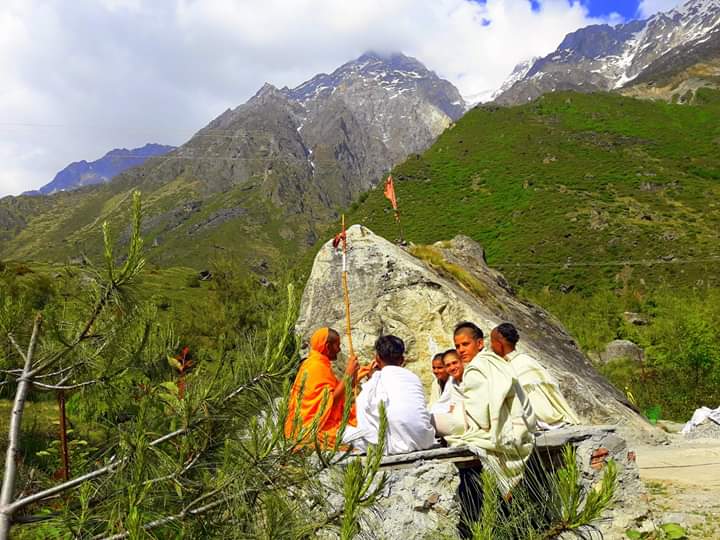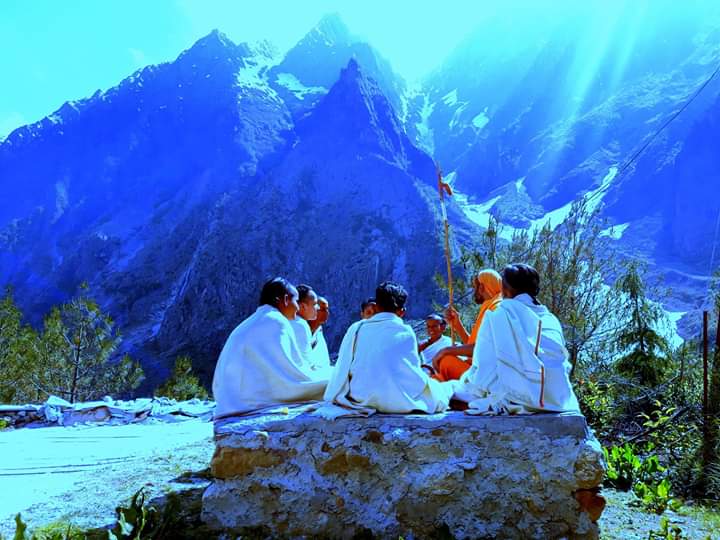Adi Shankaracharya ( 507-475 BC) and Badarikashram: The Eternal Bridge Between Dharma and Divinity



In the mystical folds of the Himalayas, where the sacred Alakananda River flows with a timeless rhythm, lies the ancient and holy land of Badarikashram. Revered as a realm of penance, meditation, and divine presence, Badarikashram holds a central place in Sanatana Dharma. But in the heart of its history stands the monumental figure of Adi Shankaracharya—the philosopher, saint, and spiritual revolutionary who reawakened this land’s eternal light.
What is Badarikashram?
Badarikashram, also known as Badrinath Dham, is more than a geographical location—it is a spiritual plane, believed to be the abode of Lord Vishnu in his meditative form as Sri Badri Narayana. The region is saturated with mythology and spiritual energy. According to the scriptures, sages like Nara-Narayana, Vyasa, Narada, Uddhva and even Lord Shiva have meditated here. It is in these sacred lands that Lord Vishnu is believed to perform eternal tapasya for the welfare of the universe.
But with the passage of time, invasions, natural calamities, and loss of collective memory, the site had fallen into obscurity and disrepair—until the arrival of Adi Shankaracharya( 507-475 BC).
Adi Shankaracharya( 507-475 BC) : The Torchbearer of Dharma
Born in Kalady, Kerala, ( 507–475 BCE), Adi Shankaracharya appeared at a time when the dharmic fabric of Bharat was under threat from ritualistic rigidity, fragmented philosophies, and declining spiritual centers.
Traveling across the length and breadth of India by foot, he unified the diverse streams of thought through the non-dualistic philosophy of Advaita Vedanta. But his contributions were not limited to intellectual discourse—he also revived temples, re-established pilgrimage centers, and systematized priestly traditions, ensuring that sacred places like Badarikashram were not lost to time.
The Sacred Mission at Badarikashram
When Adi Shankaracharya arrived at Badarikashram, the site was nearly deserted. The Vigraha (idol) of Sri Badrinarayana, which had been worshiped for thousands of years, was believed to have been submerged in the Alakananda River, near the Narada Kund. Tradition says it was either hidden or cast into the river during a period of threat, possibly by invading forces or to protect it from desecration.
Through divine guidance and yogic insight, Adi Shankaracharya retrieved the deity from Narada Kund, where the sacred hot springs still bubble to this day. The idol, a black stone image of Vishnu in meditative posture, was reinstalled in a newly restored shrine.
This was no ordinary restoration—it was a revival of cosmic order. The rituals were reintroduced, the spiritual current was rekindled, and Badarikashram was reestablished as a major seat of pilgrimage.
Jyotirmath and the Northern Seat of Knowledge
Adi Shankaracharya ( 507-475 BC) not only revived the temple, but he also founded a Matha (monastic institution) near Badarikashram, in Jyotirmath (Joshimath) symbolic for Atharva Veda Uttaramnaya Badari Jyotirmath , which became one of the four cardinal Peethas established in the four directions of India. The Jyotir Math (also called the Uttaramnaya Athava Veda Math) continues to be a center of Vedantic learning and spiritual authority to this day.
Symbolism and Legacy
- Badarikashram represents tapas (austerity)—the silent, snow-covered space of inner realization.
- Adi Shankaracharya represents jnana (knowledge)—the flame that melts ignorance and lights the path.
- When these two forces met, a new era began—an era where devotion (bhakti), wisdom (jnana), and action (karma) found harmony.
The rituals that Shankaracharya reinstituted at Badarikashram continue unbroken. Interestingly, the chief priest of the Badrinath Temple (Rawal) is still chosen from Kerala, a living tribute to Shankaracharya’s South Indian origin and pan-Indian vision. performs pooja to Sri Badari Narayana as a representative of Shankarachaya of the Peetham,
Conclusion: A Living Pilgrimage
The connection between Adi Shankaracharya and Badarikashram is not just a story of temple restoration—it’s a saga of spiritual resurgence. It reminds us that even in the darkest times, dharma can be revived through the courage, wisdom, and compassion of one awakened soul.
As pilgrims chant “Om Namo Narayanaya” in the shadow of the Neelkanth peak, they also walk in the footsteps of the Acharya who made it possible—who revived not just a temple, but an entire spiritual tradition











